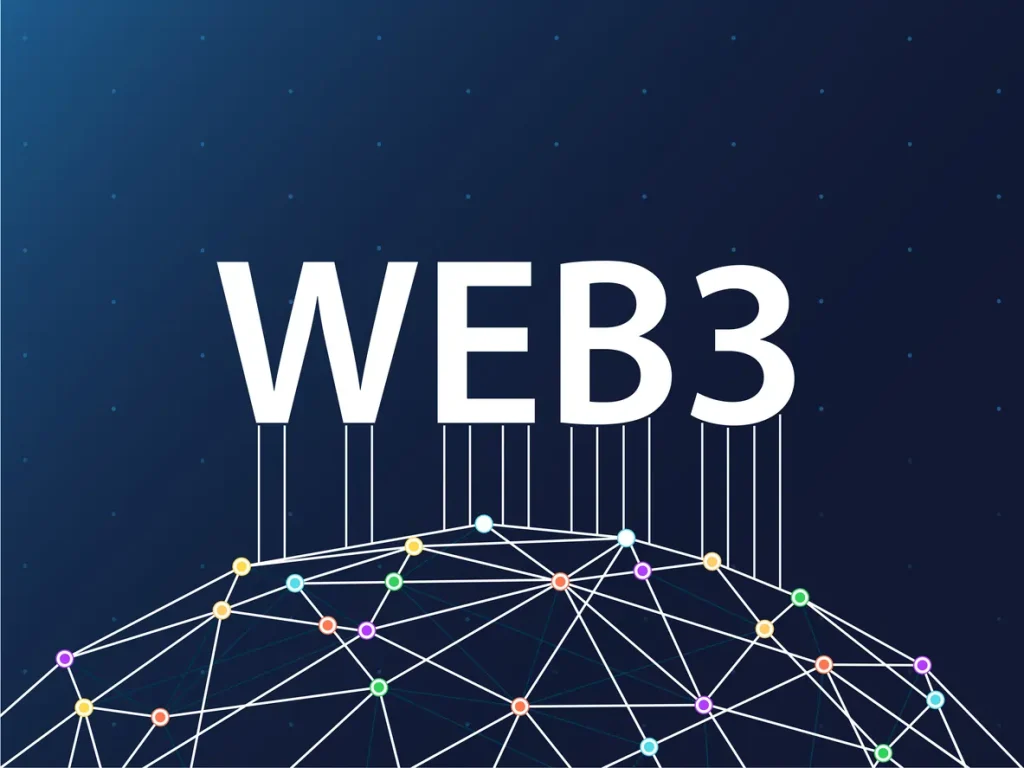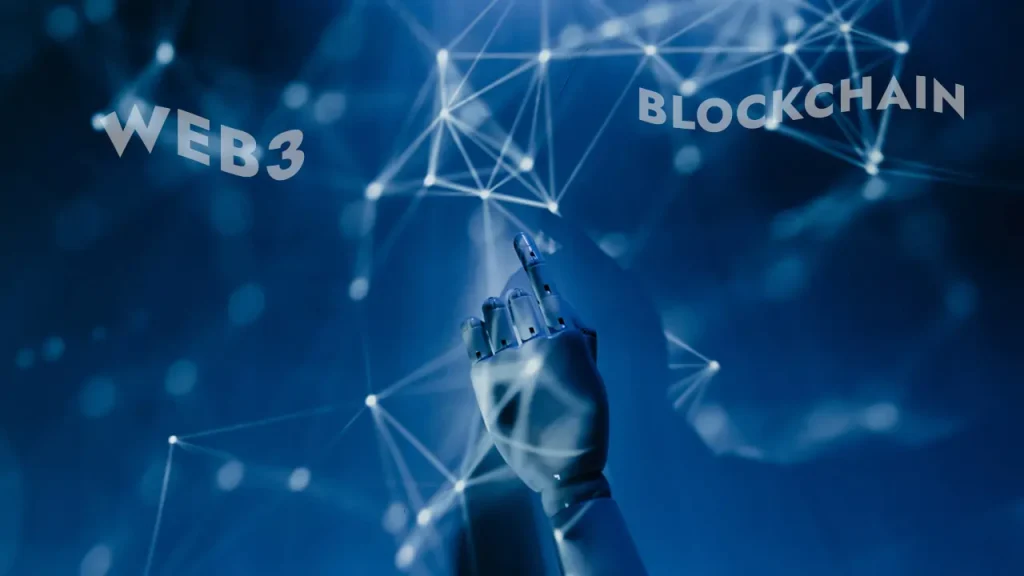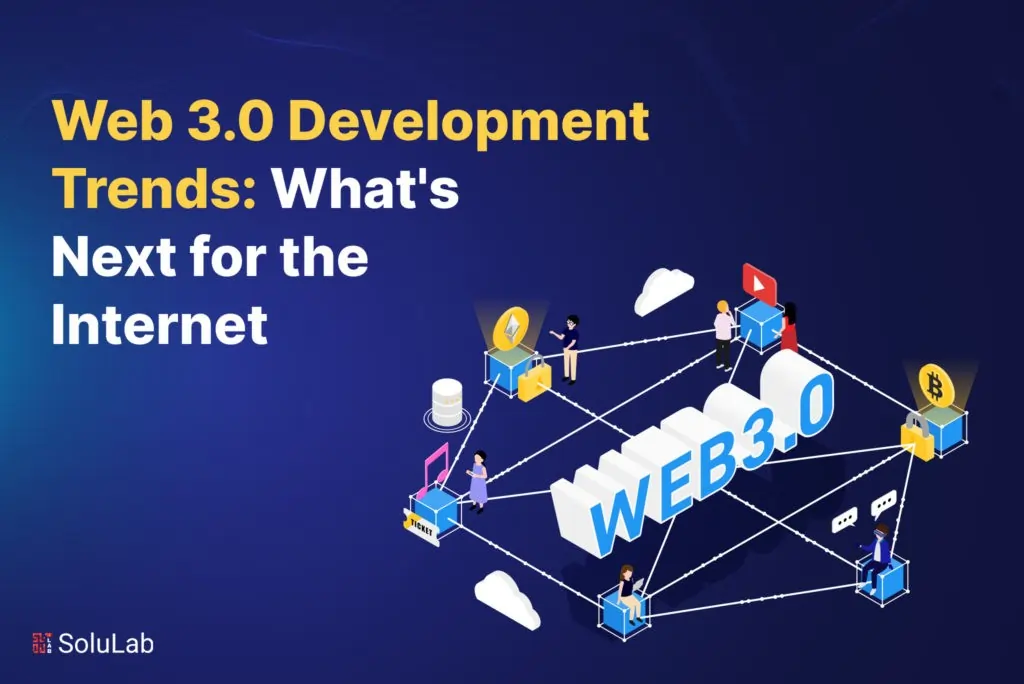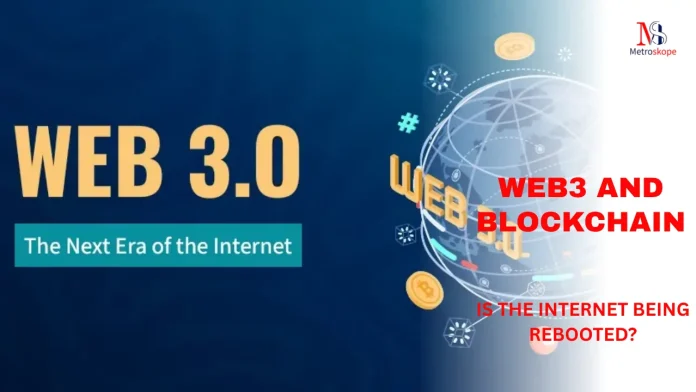The digital world stands at a pivotal crossroads. As we navigate through 2025, a fundamental question emerges: Is the internet as we know it undergoing a complete transformation?
The answer lies in the revolutionary convergence of Web3 and blockchain technology—two forces that are not just upgrading our digital infrastructure but completely reimagining how we interact, transact, and exist in cyberspace.
Understanding the Great Internet Reset
The concept of an internet “reboot” isn’t merely technological speculation—it’s happening now.
Web3 represents a paradigm shift in internet architecture, leveraging blockchain technology to create a decentralized and user-centric web experience.
Unlike its predecessor Web2, which relied heavily on centralized platforms controlled by tech giants, Web3 prioritizes three core principles that are reshaping our digital landscape.
The Three Pillars of the New Internet
Web3 is built on three fundamental principles:
- Decentralization: Removing intermediaries and giving power back to users through distributed networks
- Blockchain Integration: Leveraging blockchain technology for transparent, immutable records
- User Ownership: Empowering individuals to own their data, identity, and digital assets
These aren’t just technical improvements—they represent a philosophical shift toward digital sovereignty and user empowerment.

The Current Internet’s Critical Flaws
To understand why a reboot is necessary, we must examine the fundamental problems plaguing today’s internet. Internet 2.0 is highly flawed because of its centralized nature.
Due to centralization, few tech giants control most of the Internet. This concentration of power has led to numerous critical issues:
Security and Privacy Vulnerabilities
The centralized internet suffers from systemic weaknesses:
- Insufficient Authentication Controls
- Cross-Site Scripting attacks
- Phishing attacks and information leaks
- Security breaches affecting millions of users
- Mass surveillance and data exploitation
The Trust Problem
Why should the internet have platforms? Why do we rely on intermediaries, institutions, and referees? Because humans lack trust in each other, we rely on one ‘center’ after another to coordinate and manage.
However, these centers have gradually evolved into new power structures that not only coordinate but also control, censor, and profit from users.
How Blockchain Technology is Rebuilding Trust

Mathematical Rules Over Human Intermediaries
Web3 proposes a revolutionary solution: Can we build a self-operating, self-validating, self-protecting system without relying on trust, but on structure?
The answer lies in blockchain’s core innovation—replacing trust in people with trust in transparent, tamper-proof mathematical rules.
Blockchain technology provides an opportunity to decentralize core internet functions like DNS, data storage, traffic routing, and IoT to make them more resilient, private, and censorship-resistant.
This transformation addresses fundamental internet infrastructure by:
- Maintaining immutable records of transactions and events on distributed ledgers
- Implementing distributed DNS systems
- Securing IoT data and network flow tables
- Creating fully decentralized internet stacks for identity, storage, and payments
The Self-Writing Internet Revolution
One of the most exciting developments in 2025 is the emergence of “self-writing apps” powered by AI and blockchain integration. A new blockchain revolution is imminent, thanks to advancing AI and “vibe coding” technology.
This paradigm enables:
- Non-technical users to create, own, and update apps simply by instructing AI through chat
- Entrepreneurs without technical staff to build sophisticated applications
- Enterprises to develop custom CRM functionality at a fraction of traditional costs
- Real-time app deployment where users can refresh their browser and interact with newly created applications
Web3’s Real-World Impact in 2025
Mass Adoption of Decentralized Applications (dApps)
2025 is poised to be a defining year for the decentralized internet.
The acceleration we’re witnessing includes:
Industry Transformation:
- Finance and Gaming: Enhanced transparency, efficiency, and security
- Supply Chain and Healthcare: Improved traceability and data integrity
- Social Media: User-controlled content and data ownership
- Digital Identity: Self-sovereign identity solutions
Key Growth Areas
| Sector | 2025 Impact | Key Benefits |
|---|---|---|
| DeFi (Decentralized Finance) | Permissionless lending, borrowing, staking | No intermediaries, global access |
| NFTs & Digital Assets | Beyond art into utility and governance | True digital ownership |
| DAOs | Decentralized organizational structures | Community-driven decision making |
| Gaming | Play-to-earn and true asset ownership | Players control in-game assets |
The AI-Web3 Convergence
Artificial intelligence and Web3 are converging to create smarter, more efficient decentralized systems.
This powerful synergy includes:
- AI-driven automation in smart contracts
- AI-generated NFTs and creative content
- Enhanced fraud detection in DeFi platforms
- Predictive analytics for decentralized networks
Technical Infrastructure: The Backbone of Change
Layer 2 Scaling Solutions
As blockchain networks strive for scalability, Layer 2 solutions such as Optimistic Rollups, zk-Rollups, and sidechains will play a crucial role in making Web3 practical for mainstream adoption:
- Increased transaction speeds approaching traditional payment systems
- Reduced costs making micro-transactions viable
- Enhanced user experience bridging Web2 and Web3 gaps
- Environmental sustainability through energy-efficient protocols
High-Performance Blockchain Networks
Platforms like Solana and Avalanche offer transaction speeds exceeding 50,000 transactions per second (TPS), rivaling traditional systems like Visa.
This performance leap addresses one of the primary barriers to Web3 adoption.
Economic Transformation and Market Impact
The Token Economy Revolution
The global Web3 market size is expected to reach US$ 87.09 billion by 2030 from US$ 10.43 billion in 2023, with total Web3 revenue growing at a rate of 35.4%.
This explosive growth reflects fundamental changes in how value is created and exchanged online.
New Business Models
The blockchain-powered internet enables revolutionary business structures:
- Protocol-based businesses replacing traditional companies
- Token-incentivized participation where users earn for contributions
- Decentralized ownership models giving users stake in platforms they use
- Direct creator monetization without platform intermediaries
Real User Experience: How Web3 Works Today
Seamless Wallet Integration
When you connect your wallet to a decentralized website, there is no need to register, log in, or enter a verification code; with just one signature, you are ‘online’. This represents a fundamental shift in how we authenticate and interact online:
Traditional Web2 Process:
- Create account with email/password
- Verify identity through email
- Submit personal information to platform
- Accept terms giving platform control over data
Web3 Process:
- Connect crypto wallet (e.g., MetaMask, Trust Wallet)
- Sign transaction to verify identity
- Instantly access decentralized services
- Maintain control over personal data and digital assets
Practical Example: Decentralized Music Streaming
Consider a Web3 music streaming app where artists get paid directly by listeners, without record labels or middlemen9:
- Discovery: Visit the Web3 music platform
- Authentication: Connect your crypto wallet instead of creating an account
- Payment: Pay artists directly through smart contracts
- Transparency: Blockchain ensures fair, instant payments
- Ownership: Buy NFT-based memberships that can be resold
Challenges and the Path Forward
Technical Hurdles
Despite remarkable progress, significant challenges remain:
- Scalability limitations on popular networks during peak usage
- User experience complexity for non-technical users
- Energy consumption concerns with some blockchain networks
- Regulatory uncertainty creating compliance challenges
The Reality Check
While the concept of a free/cheap and fast decentralized blockchain-based Internet is a fine dream, a realistic implementation would likely require more than simply deploying a blockchain to replace existing infrastructure.
The transition requires:
- Gradual migration strategies rather than complete replacement
- Hybrid solutions combining centralized and decentralized elements
- Education and onboarding for mainstream users
- Developer tooling to simplify Web3 application creation
2025: The Breakthrough Year
Market Indicators
Is 2025 the Year Web3 Finally Bridges Hype and Reality?
Multiple indicators suggest we’re approaching mainstream adoption:
- Major corporation adoption in supply chain management
- Government initiatives exploring Web3 solutions
- Improved user interfaces making Web3 accessible
- Institutional investment reaching unprecedented levels
The Tipping Point
2025 will be a critical year as Web3 transitions from niche adoption to mainstream acceptance. Key factors driving this transformation include:
- Enhanced scalability solutions making Web3 practical for millions of users
- Regulatory clarity providing framework for business adoption
- User experience improvements reducing technical barriers
- Real-world utility beyond speculative trading
The Metaverse and Digital Identity Revolution

Redefining Virtual Interactions
Web3 is redefining how we engage with virtual spaces, and the metaverse is becoming an integral part of our digital interactions. This transformation includes:
- Decentralized virtual worlds owned by users, not corporations
- Cross-platform digital identities that users control
- True ownership of virtual assets and real estate
- Interoperability between different virtual environments
Self-Sovereign Identity
Decentralized identity solutions will empower users with more control over their data, enabling seamless and secure cross-platform experiences. This addresses one of the most pressing privacy concerns of the current internet age.
Looking Ahead: The Internet of Tomorrow
Beyond Cryptocurrency
While blockchain technology began with cryptocurrency, its applications now extend far beyond digital money:
- Supply chain transparency ensuring product authenticity
- Healthcare data management with patient-controlled records
- Educational credentialing with tamper-proof certificates
- Voting systems enabling secure, transparent elections
- Environmental tracking for carbon credits and sustainability
The Network Effect
When decentralized blockchain protocols start displacing the centralized web services that dominate the current internet, we’ll start to see real internet-based sovereignty.
This transformation won’t happen overnight, but the foundation is being built today.
Revolution or Evolution?
The question isn’t whether Web3 and blockchain will transform the internet—it’s how quickly and thoroughly this transformation will occur.
We are on the threshold of an Internet revolution. Blockchain will be the backbone of this new generation of Internet or Internet 3.0.
The evidence suggests we’re experiencing both revolution and evolution simultaneously. Revolutionary in its potential to redistribute power from centralized platforms to individual users, and evolutionary in its gradual integration with existing internet infrastructure.
As we navigate through 2025, the internet isn’t just being upgraded—it’s being fundamentally reimagined.
The centralized, surveillance-heavy model of Web2 is giving way to a decentralized, user-empowered Web3 ecosystem where individuals truly own their digital identity, data, and assets.
The future internet will be decentralized, and that future is arriving faster than most anticipated.
Whether you’re a developer, entrepreneur, or everyday internet user, understanding and preparing for this transformation isn’t just advisable—it’s essential for thriving in the digital economy of tomorrow.

